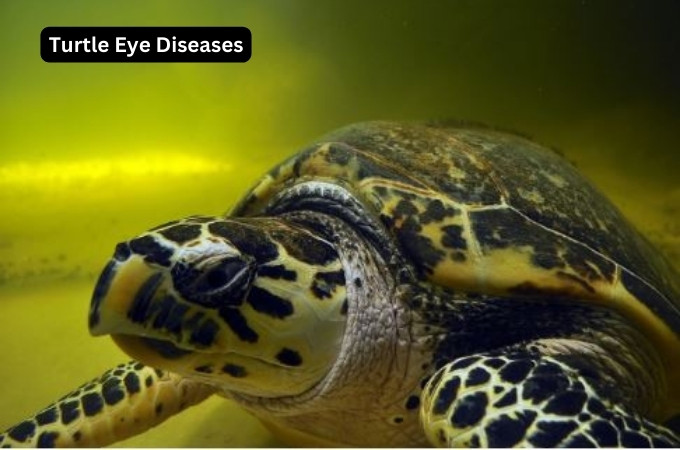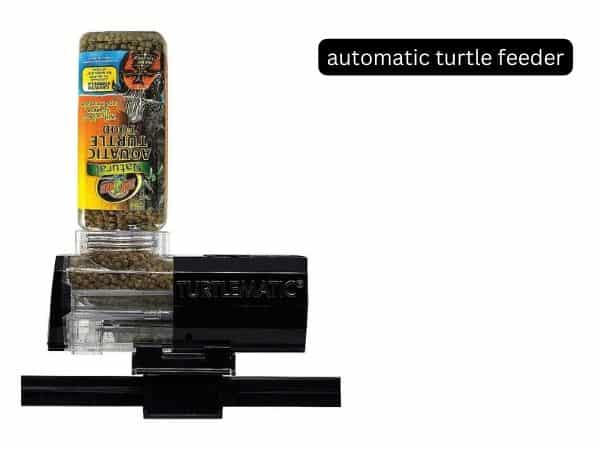Turtle Eye Diseases: reasons and treatment | turtlevoice
Today we discuss Turtle Eye Diseases. Have you ever seen a turtle flopping around in pain or with cloudy eyes that are unable to focus? Chances are, this turtle may have an eye disease. While there’s no single cause for these eye diseases, improper diet, and environmental conditions can take their toll on the health of your pet turtle.
We’ll also introduce preventative strategies for avoiding eye afflictions altogether: by providing adequate shelter, diet options, and reasonable humidity among other things — all essential pieces of a well-rounded wellness plan. This way you can be sure your beloved reptile receives the kind of holistic healthcare they need to stay fit so they can live life happy and symptom-free!
Overview of Eye Disease in Turtles:
The beguiling eyes of turtles have long been admired for their calming and wise demeanor, but these soulful orbs are not always immune to sinister afflictions. Eye disease in turtles, known as conjunctivitis, is an unfortunate ailment that can cloud their vision and undermine their very essence.
Curiously, this turmoil is typically a direct consequence of subpar husbandry, stemming from improper lighting, temperature, or lack of essential vitamins. The murky path to recovery involves a delicate dance of accurately pinpointing the underlying cause and addressing it with deft measures, such as providing adequate supplements, adjusting habitat conditions, or seeking the guidance of a reptile-versed professional.
With persistence and a gentle touch, these serene creatures can once again bask in the warm glow of unobstructed sight, inspiring admiration with each glance.
Signs and Symptoms of Turtle Eye Disease :
Turtle Eye Disease, formally called conjunctivitis, is an ailment no benevolent turtle guardian wishes upon their miniature hard-shelled companions; however, early detection is essential to prevent irreversible damage. Should your turtle’s peepers exhibit signs of puffiness, inflammation, or reddened lids, alarm bells should ring in your amphibian-empathic consciousness.
Moreover, the appearance of discharge or mucus, increased blinking or a refusal to open those once sparkling, curious orbs may signal the malignant presence of such disease. In a bid to support our fellow reptilian brethren, nurturing prompt action and seeking veterinary care when these sinister symptoms surface can ensure the continuation of frolicking, shell-bearing escapades for years to come.
Causes of Turtle Eye Disease:
In the swirling depths of aquatic life, there exists a living gem of evolution – the turtle. This majestic creature, with its hard carapace and gentle disposition, faces a myriad of challenges in today’s rapidly changing world.
Among the most concerning is the development of eye disease, which is fuelled by a combination of environmental factors and bacterial infections. Disruptions in water quality, such as pollution and increased temperatures, create breeding grounds for bacteria and fungus to thrive, making turtles more susceptible to infections.
Moreover, a lack of essential nutrients, which compromises the turtle’s immune system, further paves the way for bacterial invaders to wreak havoc on their ocular health. Consequently, these creatures face a menacing battle in pursuit of maintaining their eyes’ well-being and the crystal-clear vision that is vital for their survival.
Treatments for Turtle Eye Disease:
The fascinating world of turtles often leaves us in awe at the resilience and longevity of these ancient creatures. Yet, they aren’t immune to ailments that affect their well-being. One such malady, turtle eye disease, requires a mindful and comprehensive approach to treatment. With a myriad of options, including antibiotics and surgery, unraveling the enigma of turtle eye disease treatment becomes an urgent task.
These diverse therapeutic interventions ensure speedy recovery so that turtles can continue their remarkable aquatic journey. Moreover, familiarising yourself with the proper treatments will allow you to take a proactive role in maintaining the health of your beloved turtle companion. Education and action are key to preserving the vibrant life of these fascinating creatures.
Prevention Tips for Turtle Eye Disease:
Turtle eye disease can be quite a pet peeve for those who adore their little-shelled companions. You might be surprised by just how many simple yet effective steps you can take to keep those tiny eyes twinkling with good health.
Ensuring you provide a squeaky-clean home for your reptilian buddy is the cornerstone of defense against eye disease. Clean water, proper filtration, and a balanced diet are essential ingredients to maintaining your turtle’s eye health.
Frequent water changes and offering them a varied and nutritious meal plan can ward off bacteria and infections lurking nearby. Topping up their living space with UV light exposure will allow your adorable pet to bask in the glory of healthy vision.
It’s a small investment, but one that goes a long way in ensuring your turtle enjoys life to the full, free from the inconvenient itch of eye disease.
Taking Care of Your Turtle’s Eyes:
Turtles may be unassuming creatures, yet their eyes are windows to an underwater world filled with enchanting aquatic wonders. If you’re a proud turtle parent, it’s crucial to ensure their eyes remain healthy and clear so they can keep on exploring. With just a few precautionary measures, you can easily safeguard your shelled companion’s gaze from ailments.
Providing a clean and well-maintained environment is the first step, as foul water and debris can lead to eye infections. When you’re feeling a little peckish, don’t forget that your turtle’s diet directly affects their eye health – nutrients like vitamins A and D3, calcium, and phosphorus are essential for keeping their visual capacities in check.
If, however, you uncover alarming symptoms such as cloudiness, redness, or swelling, make sure to dive into action by consulting your trusted veterinarian. After all, your turtle’s eyes are as vital and endearing as your bond with them, and they deserve nothing less than the best care.
final word:
Taking proper care of your turtle and its eyes is not only important for your pet’s overall well-being but it is also crucial for the health of other turtles. Eye disease in turtles can occur due to environmental factors, bacterial infections, and other conditions. Fortunately, there are ways you can help protect your turtle and decrease the chances of it developing eye problems.
By reducing stressors in its environment, investing in a good quality lighting system, providing clean water regularly, monitoring the health of its eyes, taking part in regular vet check-ups, and keeping an eye out for signs and symptoms of any disease at home – you are helping contribute to the long-term health of your pet’s eyesight as well as helping reduce the spread of eye disease among turtles. Take good care!




